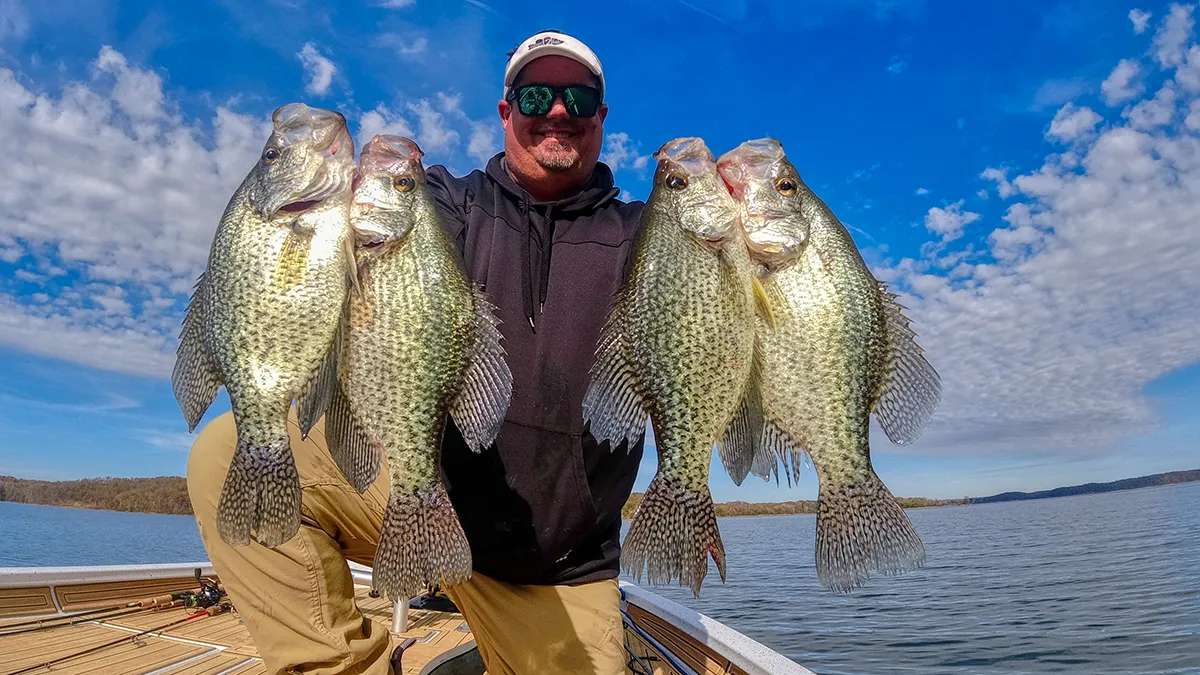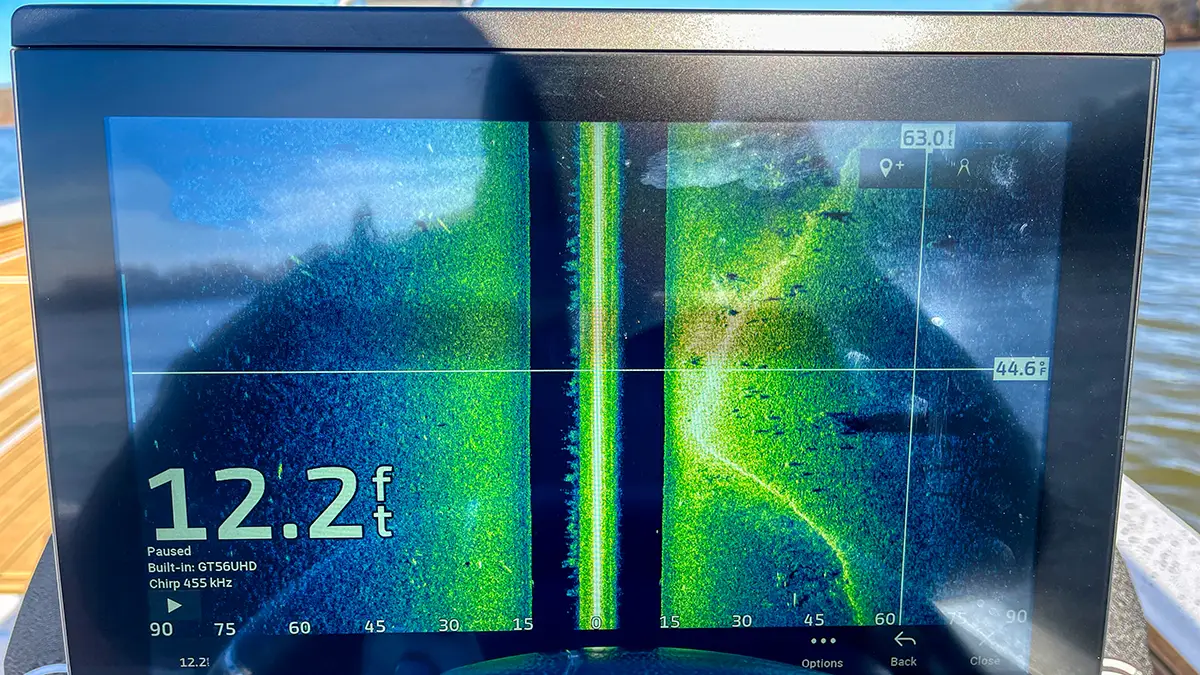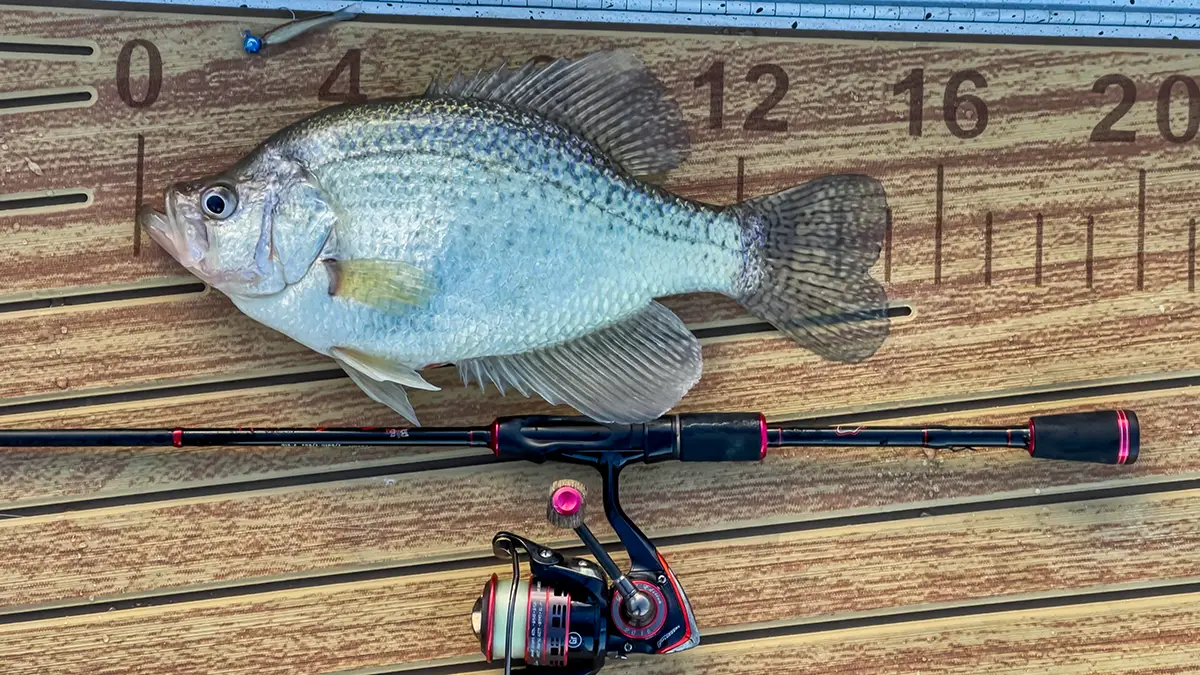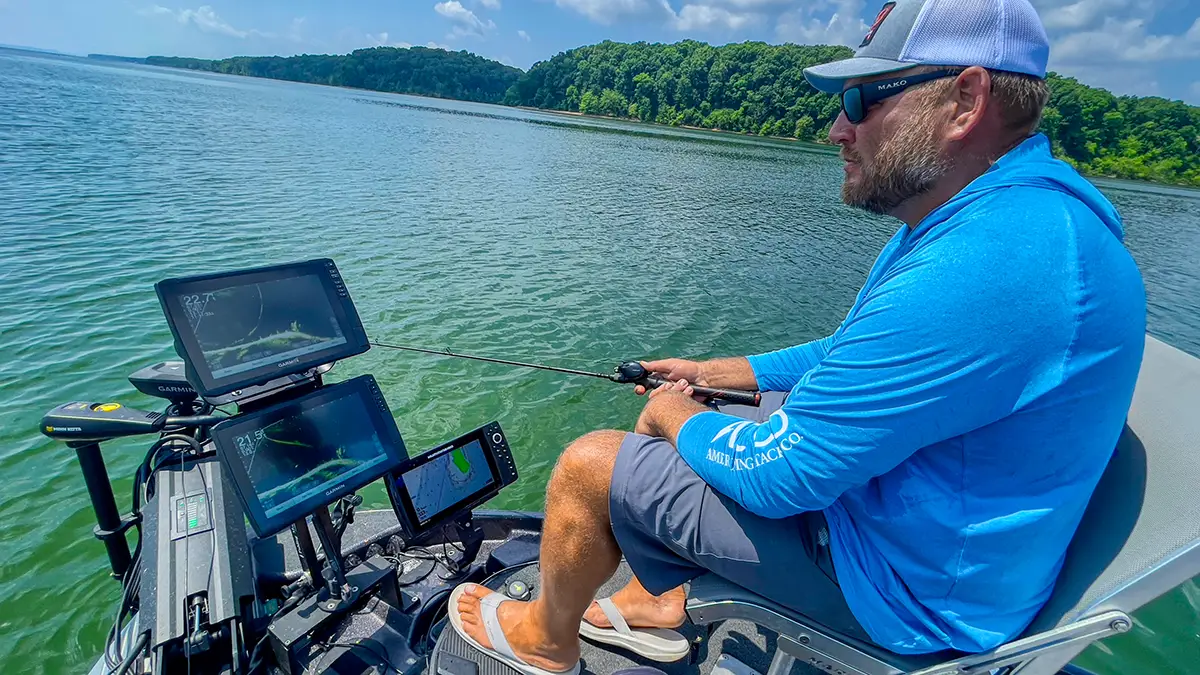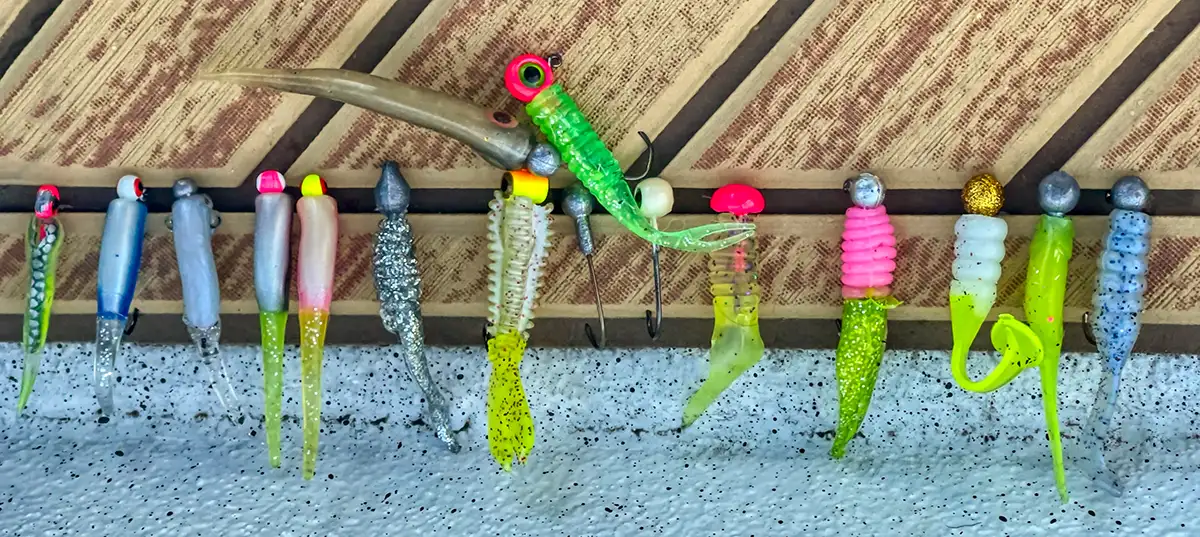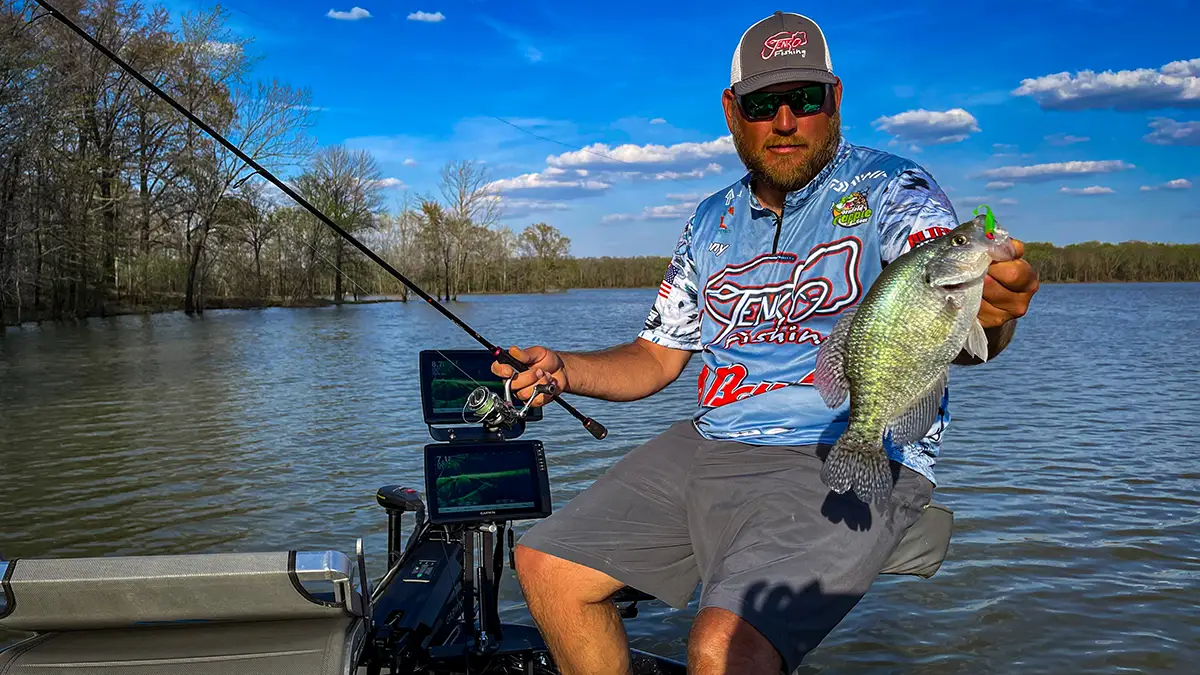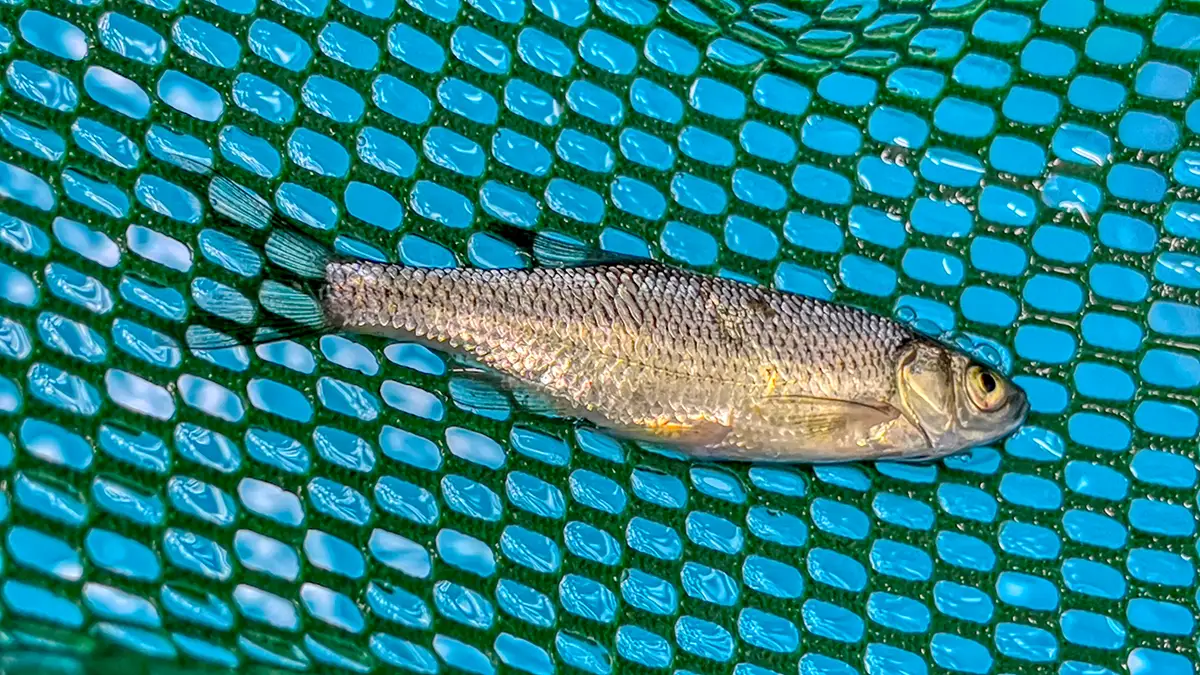Fishing for black or white crappie provides a lot of angling enjoyment, great food for the table, and an opportunity to enjoy lots of fishing action with friends and family on plentiful fish found throughout the nation. You can find crappie pretty regularly on most bodies of water and once you understand their preferred habitat, behavior and favorite baits, you will be catching them with regularity. And the biggest crappie ever caught was landed just a few years ago in 2018 in Tennessee. So catching a state or world record crappie is a possibility every time out.
In this guide, we will help you prepare to catch crappie with regularity by covering the following crappie fishing topics:
- Where to find crappie
- What crappie gear you need
- What crappie techniques work
- Best crappie baits
- How to fish for crappie
- How to catch crappie in the spring
- How to catch crappie in the fall
- How to catch crappie in the winter
- How to catch crappie in the summer
- Crappie Q&A
Where to find Crappie
Finding any fish is mostly about understanding their preferences related to the environment on any given fishery. So not all crappie do the exact same things on every lake, but the majority of crappie will do the same things on any given body of water.
Their spawn happens when the waters start warming into the high 50s in early spring. So, in some southern parts of the country, that might be January or February, and in some northern parts of the country, that might be May. So it’s relative to where you are in the country. But for the most part, when the waters get into the 50s, crappie are going to move out of deep winter haunts and move towards shallow cover to feed and eventually spawn and guard before returning to deep water in the summer.
So what you want to find is where you think they will spawn in the spring and work back from there. So if your lake is covered in vegetation, they will likely spawn around grass edges and pockets in the grass. If your lake is full of stumps or wood cover, crappie love to spawn in and around stumps and laydowns. One laydown tree might have 15 crappie beds on it. And, on a stump flat, there might be a crappie nest on every stump.
Take Kentucky Lake for instance. The white crappie spawned in the bushes in shallow water when the water had a lot more color and there are still some places where they do that. However, as our water clarity has gotten a lot clearer, the large majority of crappie spawn off the bank on stumps in water 2-8 feet deep depending on water clarity and location. Black crappie spawn on rockier banks here and even those have moved out a little deeper as the water has gotten clearer.
We target a lot of our crappie in that depth zone of 2-12 feet when the water is in that prime temperature range. We target a lot of wood cover. And on some lakes crappie prefer getting in a certain type of tree more than another. I know down south and out west in Texas in Oklahoma, crappie really love those “bodark” (bois d’arc) trees more than just a slick standing pine tree. On Kentucky Lake, I’m convinced a crappie would rather be in a stake bed than a cedar tree, and a stump more than either. Most of the very biggest crappie I have caught came on stumps.
After the spawn, two crappie will generally share the job of guarding the nest and fry. They are easily picked off from shallow cover when they are in this mode but also I like to let the big ones go this time of year to protect spawn recruitment for the future.
On the flip side of fishing cover for crappie, Garmin Livescope and real time imaging has expanded our knowledge of how much crappie roam and suspend. Some of the biggest crappie on trophy fisheries like Grenada live a large portion of their lives not relating to cover at all. They roam and follow bait and meander in and out of cover and suspend just under the surface in water with a lot of color. We’ve found during the winter, a lot of crappie are high in the water column suspending over deep water, we are guessing to sun their eggs and prepare for the impending spawn.
So knowing that crappie will be in shallow cover, mid depth cover, and deep cover but also suspend shallow out over deep water at times means you have to know several ways to catch them and be familiar with a lot of the gear and techniques that will put good crappie fishing within reach.
Crappie Fishing Tackle You Need
To catch crappie you basically need a limber rod, a reel, light line, and a bait of choice that might require a hook and light weight. I say a limber rod— that’s if you plan to cast your bait. You can also get away with a stiffer, longer jigging rod if you intend to only vertical fish. I’m a big proponent of having a good casting rod, a good jigging rod and a multipurpose rod for crappie fishing. I highlighted these in my 3 best crappie rods piece.
General advice says to start with a good spinning rod in a light to medium-light power in 6-foot to 7-foot lengths. I recommend starting simple with 4-pound monofilament. I’ve used BFS rod and reel setups, jigging rods with braid and more, and yet I still catch a large majority of my crappie every year on 4-pound monofilament. It’s cheap, simple and frankly it just works for crappie fishing.
On the spinning reels, 1000 or 2000 size reels can make casting easier. Yes big spinning reels sound like overkill for crappie. If you get a 7-foot rod with a bigger reel, however, put some cheap backing on it and then spool your 4-pound line on there, it will cast so much better than a tiny 500 reel. A 500 size reel is fine, you can just get more casting distance with a slightly bigger spool if that matters to you.
Then you need a bait for the crappie. You can use live bait or you can stick with artificial lures. A crappie jig is hard to beat on a 1/16-ounce jighead. But a minnow on a hook with a small split shot weight is also highly effective, although a little more cumbersome to deal with. I am a 100% artificial crappie angler. I never use live bait. I’m not against it. I just think using lures is a lot less hassle and I prefer the chase and fooling the fish more than the reeling in part. But I also still get a kick out of seeing a bobber go under, so I definitely see the allure in live bait fishing. Both will catch plenty of crappie. We’ll focus on baits more below.
Best Crappie Techniques
Several techniques catch crappie with regularity. Vertical jigging, trolling, casting, spider rigging, shooting docks, pushing jigs, and just a simple minnow on a bobber around cover all produce crappie at various times on many fisheries. And now new innovations like Bait Finesse System for casting light crappie jigs on baitcasting gear is getting a foothold.
Personally, I only cast, and vertical jig and catch crappie 12 months out of the year. I will cast a jig below a bobber to fish over shallow cover in the spring, but for the most part I’m simply casting a 1/16-ounce jig or vertical jigging a hair jig 80-90% of the time. I think casting for crappie is something you can do everywhere once you learn a little bit about how crappie react to movement and retrieves. I previously shared some of my best retrieves for crappie jigs.
Trolling for crappie can be done with jigs or crankbaits and even live bait. It’s just a matter of spreading your lines out and pulling your baits at a relatively slow speed through likely areas. A lot of guys pull crankbaits in the warmer months when crappie spread out and go deep. Where it’s more one or two fish here and there and you have to fish a lot of stumps and brush piles to catch a limit of crappie.
Spider rigging has been popular for a long time. Similar to trolling you spread rods out in front of the boat and ease along contours or areas with multiple pieces of cover pushing your baits into the fish’s locations. Long rods like you would use for trolling are ideal. Usually one person can watch 4 rods on a stand easily, but even two rods per angler can yield better numbers. It allows you to experiment with depth and color with multiple rods at once.
Pushing jigs has gained in popularity where you put rods out in front of you and slowing troll with the trolling motor and push jigs forward through cover, picking off active fish before you pass over the cover. This can be great in water that is too shallow to troll but to large to cast and cover efficiently.
All three of those techniques require a boat to fish your presentations. Whereas casting jigs, fishing bobber rigs, and even vertical jigging can be done from the bank, kayak or in a boat. So they are the most important techniques to master as a crappie angler.
Best Crappie Baits
There is a lot of debate in whether live bait or a jig is the best bait for crappie. It’s hard to beat a minnow. A close second would be a small / light soft plastic on a jighead. Crappie jigs give you lots of options on color and weight and you can quickly cover water casting and slowly retrieving a light jig. Popular sizes are 1/16 ounce, 1/32 ounce and 1/8-ounce jigs. Popular colors include monkey milk, anything with chartreuse and contrasted color combos.
Crankbaits will catch crappie as well. Pulling crankbaits behind a boat in deeper water in the summer months is a great way to cover water and catch good aggressive crappie. Loud contrasty colors are usually the best bets on most fisheries where crankbaits are effective.
We’ve done some pieces on jigging raps for crappie as well as jerkbaits for crappie. These and other types of lures are generally limited to fisheries with very clear and deep water like you find up north. Tiny jigging spoons can work at times as well. But the large majority of anglers will stick with small 2-inch jigs and 1/16 ounce jigheads or a minnow on a hook, split shot and small bobber optional.
Other live bait would include crickets, meal worms, and even freshwater shrimp that can tempt crappie at times. But 9 out of 10, live bait crappie anglers will choose minnows like Rosey Reds, fathead minnows, emerald shiners and golden shiners, which are all popular live bait for crappie.
There is a lot more in depth information in our Best Baits for Crappie post.
How to Fish for Crappie
The biggest takeaway in fishing for crappie is that you should err on the side of subtle. You’ll catch more crappie with a slow steady retrieve than a lot of jerking and hopping. I do pop my jig some, but usually that is followed with a long pause. I call these micro movements I impart on my crappie jigs “stuttering.” I cast out and let the jig fall on semi slack line, watching my line the whole time. Then I will lightly lift the rod slightly and then let it fall again. Or I will reel for a second or two and stop a split second and then go again.
About half the bites you won’t feel. You will see them if you’re a good line watcher. Crappie like to hit things on the fall. And even more on the pause. A lot of fish are caught vertical jigging by just holding the jig as still as possible in a crappie’s face until they finally can’t stand it and bite.
So be a line watcher, watch your line as the lure falls. Then slowly reel steadily along watching your line. Then stop reeling for just a second and let the bait pause. And then start reeling again. Usually that little stutter will generate a bite if a fish is following. But keep it real subtle.
How to catch crappie in the spring
In the spring, look for shallow cover in that 2- to 8-foot zone. Look for bait and cover in areas, and a little water color will put the fish tighter to cover and a lot shallower. The clearer the water, the deeper the fish will be. If you’re looking for black crappie, don’t ignore rocky banks leading back to spawning pockets and flats.
Look for shallow little high spots in the mouths of bays and pockets or half way back in pockets. I catch a lot of big spring crappie on these high spots with cover in the backs of bays.
Weeds, stumps, laydowns, docks, stake beds, rocks are all good places to fish for crappie in the spring. A small jig under a bobber is a dynamite way to slowly fish over the top of shallow cover. Any little twitch on the bobber, be ready to snatch.
How to catch crappie in the fall
While most folks know spring is king for crappie fishing, I actually prefer fall. Because in the fall, crappie group up in big schools and chase bait and fill cover as the water cools. You can pull up on cover in that 6-14 foot range and absolutely load the boat with big hungry and aggressive crappie. I fish some big stake beds in 13-15 feet of water in the fall that load up with 1 to 1 1/2-pound half crappie, and it’s some of the most fun fishing of the whole year.
Find bars with a lot of cover and just ease from piece to piece making short casts and pitches. A brush pile, standing tree, stump row, or stake bed on top of a drop can be lights out this time of year. Keep moving until you find a good group or better quality because there is somewhere holding a big group of good crappie this time of year.
How to catch crappie in the winter
As the water gets much colder, fish will push out deeper on cover and bait and creek channels and ledges. The fish become a lot less aggressive and this to me is when vertical jigging really shines. It’s a lot of pushing the jig into the cover and then holding it real slow until a crappie slowly rises up and takes it. You might have to let a crappie look at it for minutes before it will bite. It really tests my patience as a crappie angler.
Minnows get a lot stronger as a bait choice in the winter. The added scent and natural wiggle can make a leery crappie bite. The crappie are more spread out in the winter. Much like they are in the summer. You will find a crappie or two on a piece of cover or out roaming in open water. And then you move down and find another one or two. So you have to touch a lot of cover
How to catch crappie in the summer
I think summertime is one of the harder times to catch crappie. They are done spawning and the warm water sends them deep and spreads them out across miles of the lake or river. So the name of the game is covering water or finding a lot cooler water. This is why pulling crankbaits is so effective in the summer. You might have a stretch that is a mile long that has 60-100 stumps in 20 feet of water. It would take you forever to fish them. But you can slow troll crankbaits and hit the whole stretch and milk crappie off of it pass after pass.
If you’re on foot or in a kayak, than sometimes you can find some cool water streams that the crappie will go up in. I’ve had some good days going way up a river and fishing cooler waters for crappie.
But usually, on most lakes, it’s a timing thing for summer crappie fishing. In other words go really early and fish deep cover early in the morning for a couple hours and late in the evening for a couple of hours. What crappie you find in cover will prefer the low light periods, cooler rainy days, early and late feeding windows.
Crappie Fishing Q & A
We’ll try to answer some of the more common questions related to crappie fishing in this last section.
What is the best month to crappie fish?
This depends on where you live. Some folks favor the spring month closest to the spawn. For me personally living in the middle part of the country, November is the best month. When the water temps are 50-58, you can load the boat fast with good crappie. You get size, numbers and loaded pieces of mid-depth cover with the most aggressive crappie of the year. So because of that I pick November. But really its the month when the water temps are in the 50s where you live.
How deep do you crappie fish?
You can catch crappie in inches of dirty water or out to 50 feet on clearer impoundments. But day in and day out I think most anglers target crappie from 4 to 14 feet of water. Deep enough to not be spooked by your presence and deep enough to pile into a brush pile or hole up under a dock and waiting to be plucked off.
What time of day is best for crappie fishing?
Generally speaking crappie prefer low light conditions. You can catch them at night on docks with lights. You can catch them on rainy days and dark overcast days. But early and late can show a real pickup in feeding activity. I have some crappie spots that are very good early in the morning and others that are a lot better in the afternoon or evening. I think it has to do with how the sun casts shadows in and around the cover. Something we underestimate when figuring out where crappie are positioned on cover.
What is the best crappie fishing technique?
It’s hard to say one technique is the best. I know guys like me who never use live bait. But I also know guys who always catch them and always use live bait. I never troll, spider rig or push jigs. I want to be active in tempting and catching crappie, so I prefer to cast and pitch to crappie or cover that could hold crappie.
The best technique is the one that efficiently temps the crappie the best most of the time. If you catch more big crappie vertical jigging then hone that technique. Go to different parts of the lake, fish different times of the day or month and really perfect your technique.
Is crappie fishing easy?
I think it can be effective year round if you’re willing to learn your lakes, experiment and find what your crappie respond to the best. You don’t need a lot of expensive gear. Some small jigs, 4-pound monofilament line, a small rod and reel and you’re good to go. It’s a lot of slow slow fishing or vertical jigging. But if you will seek out cover in the right depths and maximize your fishing around the best water temperatures and low light periods, you will have a lot more success and be successful more often.


